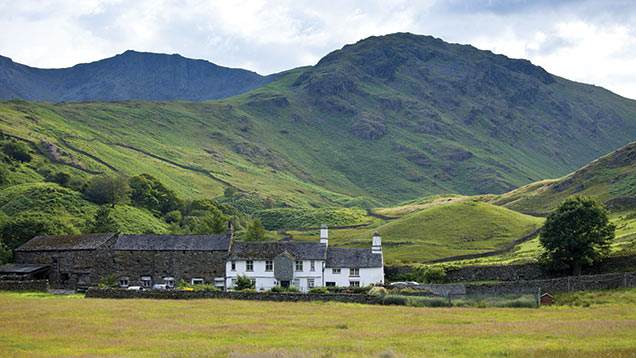Business Clinic: How to tell if your farm holiday let qualifies for tax relief
 © Tim Graham/Robert Harding/Rex Shutterstock
© Tim Graham/Robert Harding/Rex Shutterstock As part of Farmers Weekly’s Business Clinic, experts tackle readers’ most tricky business questions. Sam Kirkham, Albert Goodman, shares her advice.
Q: I have a capital gains tax (CGT) question. My wife and I farm in partnership and bought two semi-derelict adjoining cottages in 2005, which we restored and turned into one property.
They were bought with 28ha of land adjoining our existing property. Restoration was completed in December 2013 and they have been let on a six-month lease for the past 18 months.
I am advised that if I now change the use (say from 1 August this year), to a furnished holiday let (FHL) and comply with the qualifying tests – the availability and letting conditions and the pattern of occupation – I could if I wished, sell the property in September 2016 and claim entrepreneurs’ relief (ER) and reduce the CGT liability from 28% to 10%.
Have I understood correctly? Or if I am partially correct, and there are any pitfalls, for example having to start on a calendar or tax year (which I do not think is the case as it is a “new” let)?
See also: How farmers can avoid inheritance tax traps
A: There are special tax rules where furnished property is let commercially for FHL. To qualify it must meet certain availability and occupation conditions within a 12-month period (normally the tax year). If the letting starts or ceases mid-tax year, it, the first or last 12 months will be the relevant period.
If property does qualify as FHL, various tax breaks are available.
These treat the income as earned income for pension purposes and capital allowances can be claimed on furniture and fixtures such as kitchen and bathroom sanitary ware, internal electrics, heating and plumbing.
There are some potentially very generous CGT reliefs for business assets but careful planning is needed if they are to be fully effective.
For CGT purposes, when the property is sold or given away, the disposal should qualify for rollover relief, holdover relief and ER.
To benefit from ER the taxpayer must also satisfy qualifying conditions.
There needs to be a disposal or part disposal of a business, or an asset used in a business when the business ceases. The ER conditions must be satisfied for the whole 12 months to the date of disposal/cessation.
ER rules are complex and depend on ownership of the asset and business structure.
For example, where an FHL business has one property and the business ceases, ER is relatively simple and can be claimed on a disposal of the property up to three years after cessation. However, complications arise where:
There is more than one property and one is sold but the FHL business continues with the other properties. For ER to apply it is necessary to satisfy the “part disposal of a business” condition.
Whether this condition is satisfied will depend on the particular circumstances. Therefore advice should be taken – careful planning may be needed to satisfy HMRC that ER is available.
The property is owned outside the partnership but the partnership runs the business. In this case there are three issues:
- The gain may need to be time-apportioned for any period when the property was not an FHL. This proportion of the gain will not qualify for ER.
- ER will also be restricted if the partnership paid rent to the owner of the property.
- For ER to apply there will need to be a disposal or part disposal of a business, requiring a reduction in the partner’s share in the partnership business. The 2015 budget has added further complications here so take advice on the particular circumstances.
Don’t forget that with the demise of milk quotas this year, past and present dairy farmers may have capital losses from purchased milk quota to set against capital gains.
Consideration should also be given to VAT. If the FHL business is to be run by the VAT-registered farming partnership, VAT will need to be charged on the FHL income. However, this will mean that VAT can potentially be recovered on the restoration costs.
There is a six-year time limit commencing on the first day of the VAT return period when costs were incurred.
However, if the partnership sells the cottage before December 2016 (three years from completing the restoration), VAT would be chargeable on the selling price, unless it is sold as a trading business under the transfer as a going concern rules.
The information provided in these articles does not constitute definitive professional advice and is provided for general information purposes only.
Do you have a question for the panel?
Outline your legal, tax, finance, insurance or farm management question in no more than 350 words and Farmers Weekly will put it to a member of the panel. Please give as much information as possible.
Send your enquiry to Business Clinic, Farmers Weekly, RBI, Quadrant House, The Quadrant, Sutton, Surrey SM2 5AS.
You can also email your question to fwbusinessclinic@rbi.co.uk


